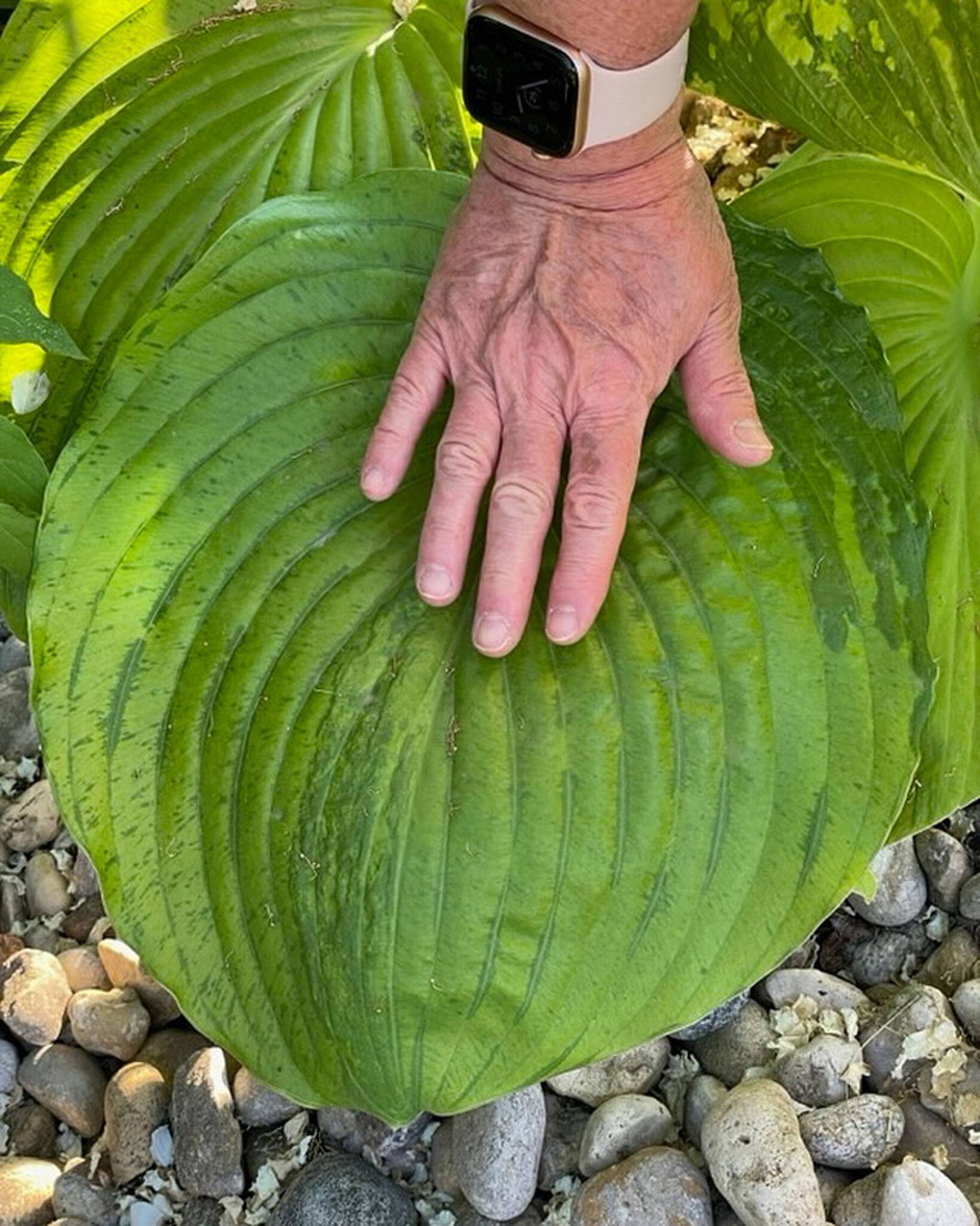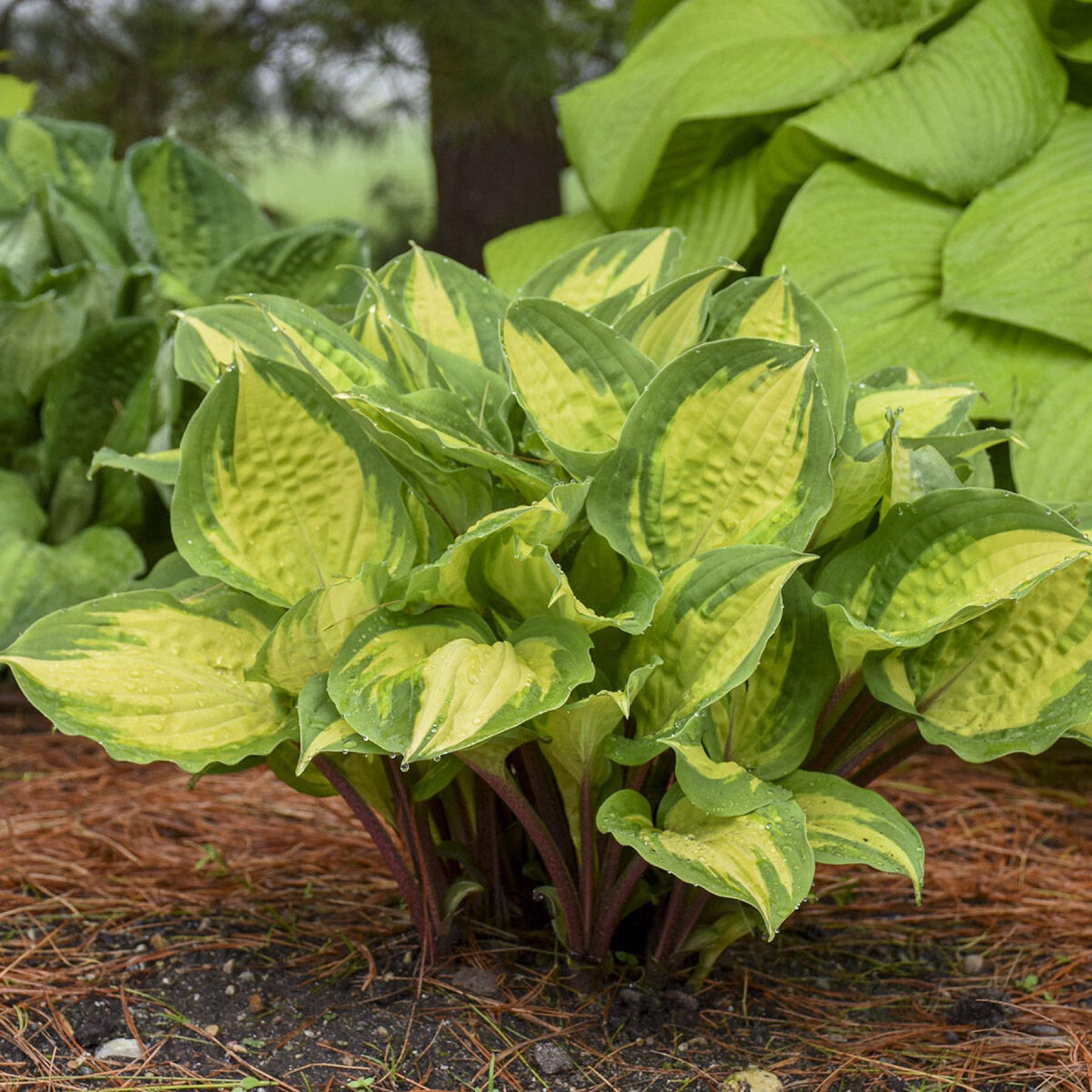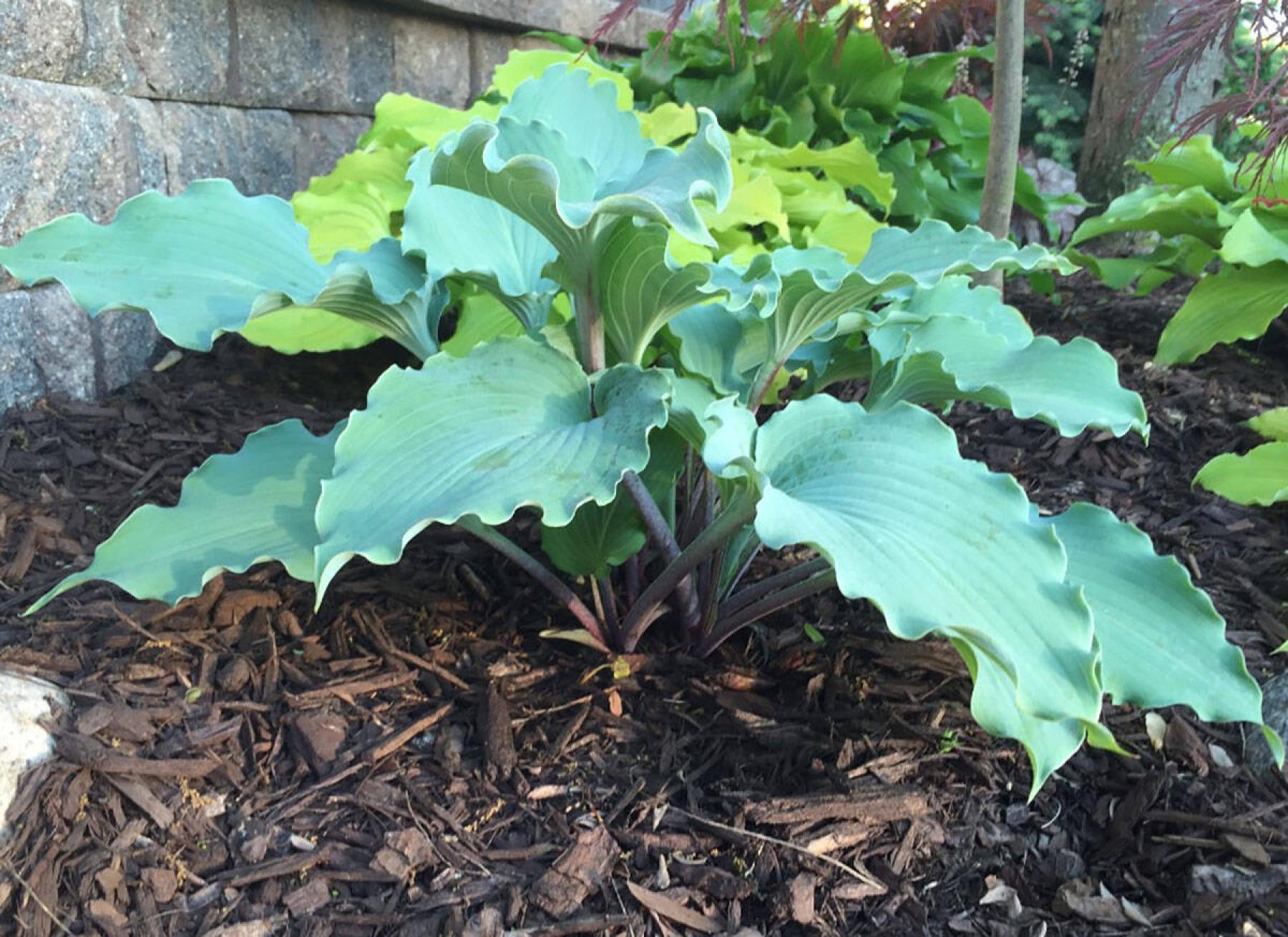
Terry Klippenstein photo
Rhona Klippenstein’s garden in Altona features a beautiful, diverse display of 60 hostas.

Terry Klippenstein photo
Gardeners have an enduring love for the iconic hosta which offers many different shapes, sizes, colours and patterns.

Proven Winners photo
With distinctive colouration, Shadowland Autumn Frost promises to be a standout in a shade garden.

Walters Gardens photo
Hosta Island Breeze is an improved variety with impressive variegation.

Robert M. Solberg photo
Hosta Skywriter, named 2025 Hosta of the Year by the American Hosta Growers Association, has heavily ruffled aqua-blue leaves with white undersides.
Hostas are the ideal perennial for shade.
Hardy and reliable, they are the workhorses of the shade garden. They make great fillers when you don’t know what else to plant.
Scratch that! Because while there is truth in all of the above, hostas are so much more than a utilitarian plant. The power of the hosta lies not only in the number of species and several thousand named cultivars which offer sumptuous foliage and a dazzling array of shapes, colours, patterns and textures. Rather, this iconic perennial’s potential lies in how it is displayed in the garden. Grouping together different cultivars of hostas which have distinctive forms and foliage is key to creating a successful, esthetically pleasing display.
Rhona Klippenstein has it nailed. So captivating is her display of diverse hosta varieties that it caught my eye from a distant roadway on a visit to Altona. I couldn’t resist getting a closer look.
Klippenstein has deftly arranged 60 hosta plants in a linear bed approximately three-by-16-metres long. The bed is situated on one side of her house, with a row of evenly spaced maple trees providing dappled shade to the colourful underplanting.
Proper spacing when planting a collection of hostas is a prime consideration. In Klippenstein’s garden, the placement of plants is masterful. Instead of an overcrowded jumble of foliage, the unique shape of each individual hosta is prioritized.
“I find hostas to be such a beautiful plant,” says Klippenstein. “I try to have a variation of different colours of leaves and different shapes and sizes of leaves. It’s kind of like reading music instead of listening to the notes.”
Varieties include Paul’s Glory, a medium-sized hosta with variegated foliage; Frances Williams, a large hosta with giant, blue-green leaves with yellow margins; fast-growing Guacamole hosta with chartreuse-gold leaves with dark-green margins; strikingly bold Sum and Substance hosta with immense, ribbed leaves of chartreuse; Love Pat hosta which has deeply cupped, corrugated blue leaves; and Whirlwind with dramatically twisted, variegated leaves that transition in colour as the season progresses.
While the shape of the hosta bed is linear, Klippenstein’s plants are not arranged in straight rows. “I sprinkled the varieties. I am not a formal person, so I did not want straight lines,” she says. “The plants are staggered so that you see the different shapes.”
A simple rule is to check the plant tag for mature width (spread) and to space hostas at 70 to 80 per cent of their mature width from centre to centre. This provides for a full but not overcrowded look. Adequate spacing also promotes good airflow which helps to prevent fungus or slug issues.
Klippenstein’s collection is mostly from plant divisions given to her by her friend, Mary Anne Loeppky.
“We’ve always known each other,” says Loeppky. “One day when I stopped by for a visit, Rhona began talking about starting a new garden. I love dividing my plants and was very willing to share with her, so I loaded up her vehicle. It’s been very exciting for me, too, to watch her garden develop.
“The thing about hostas is that if you can be patient, they will reward you.”
Variety for every taste
One of the reasons we love hostas is that there is a variety for every taste. As well, there are varieties that can be selected for different light conditions. Hostas with leaves that are in shades of blue perform best in part shade to full shade while hostas with chartreuse, yellow or gold leaves need more light.
One of the hosta varieties we will see at local garden centres next spring includes Hosta Skywriter, named 2025 Hosta of the Year by the American Hosta Growers Association. It’s an intriguing variety with heavily ruffled aqua-blue leaves with creamy white undersides. The leaves are held on deep-purple petioles. Mature height is 40 cm with a potential spread of 1.1 metres.
Aubin Nurseries in Carman grows an extensive variety of hostas which it supplies to garden centres across the Prairies. Garth Aubin says that his favourite variety is Shadowland Autumn Frost from Proven Winners. “It has a beautiful frost-blue centre with a bright-yellow margin that lightens to creamy white during the summer,” says Aubin.
I love Autumn Frost, too, and planted several in my garden last summer. The colour of the foliage is striking.
Aubin is growing several of the varieties in the Shadowland series including Hope Springs Eternal, Love Story, Miss America, Voices in the Wind, Wu-La-La and Sound of Music, a giant hosta with heavily corrugated leaves. New for 2025, the leaves of Sound of Music have chartreuse centres with glaucous blue-green margins. The centres mature to creamy white in summer. Sound of Music has a mature height of 76-81 cm and a spread of 1.5-1.7 metres.
High Society hosta is on the smaller side, says Aubin. A compact sort of June hosta, High Society has a mature height of just 20 cm and a width of about 38 cm. The yellow-centred foliage has wide blue-green margins.
A tried-and-true variety which is consistently in demand, says Aubin, is Patriot hosta. A medium to large-sized hosta (60-90 cm wide), the leaf edges of Patriot are slightly rippled. The leaf shape is widely oval with a cuspidate tip. Dark-green centres have white, streaked margins that start out creamy yellow in spring. Patriot was named Hosta of the Year by the American Hosta Growers Association in 1997 and remains one of the most popular variegated hostas ever introduced.
“There are other varieties that are extremely unique and sought after,” says Aubin, “but as a result, they can be hard or even impossible to source because they do not replicate consistently either by tissue culture or bare-root divisions.” An example of this, says Aubin, is hosta Emperor’s New Clothes, a radically unique hosta with white flecking on each leaf.
“Other hosta varieties we have started carrying in recent years that have shown popularity are Dancing with Dragons (blue shades) and Cool as a Cucumber (long tapered, pointed leaves with bright green margins),” says Aubin. “Another one we really like is Island Breeze Hosta. Unlike some of the other yellow hostas, this one has performed well.”
Island Breeze is in the same family as Fire Island and Paradise Island, however, it is an improved cultivar with thicker leaf substance and more impressive variegation. Dark-green margins contrast with bright-yellow centres in early spring. In deep shade, the centres are more chartreuse. In brighter locations, the centres are more yellow.
It’s always a good idea to cut hostas back in the fall once the plants have gone dormant. Remove the foliage from your garden. This will help to prevent slug and insect problems.
colleenizacharias@gmail.com



